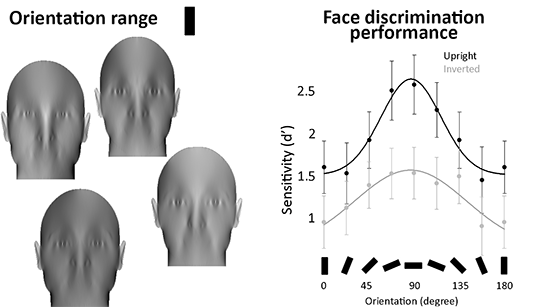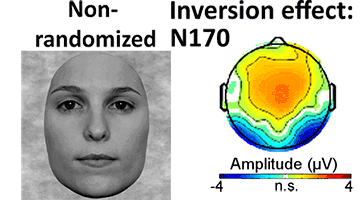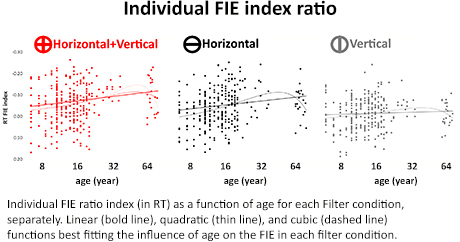Orientation Selectivity
Orientation selectivity is a fundamental property of primary visual encoding. High-level processing stages also show some form of orientation dependence, with face identification preferentially relying on horizontally-oriented information.

Link between high-level and primary orientation tuning. In the same group of participants, we derived the orientation selectivity profile at primary and high-level visual processing stages using a contrast detection and an identity matching task both performed on face stimuli. Orientation selectivity showed distinct profiles at primary and high-level stages of face processing suggesting that a transformation must occur from general cardinal attenuation when processing basic properties of the face image to horizontal tuning when encoding more complex properties such as face identity.
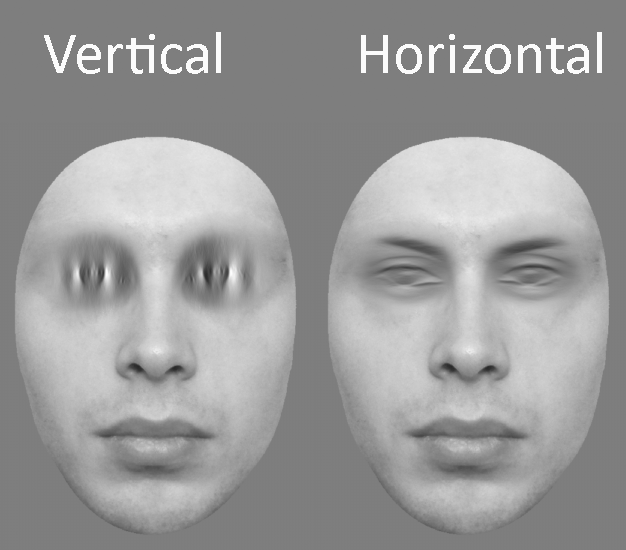
What about gaze?
The human face is a horizontally-structured stimulus, and the processing of identity is tuned to the horizontal range. In contrast, gaze shifts are mostly represented in the vertical range. We recently showed that the face processing system flexibly tunes to vertical information when processing gaze direction.
Behavioral “signatures” of face processing (i.e., the face inversion effect, the facial identity after-effect, face-matching across viewpoint, and interactive, so-called holistic, processing of face parts are driven by a narrow range of horizontal face information.

FFA mean activation is tuned to the horizontal range of upright face information; but orientation decoding in this region is at chance. The activation patterns induced in FFA by upright and inverted faces can only be separated when based on horizontal information. In contrast, V1 responds less strongly to horizontal than other orientations.
Interestingly, orientation decoding accuracy in V1 is best for meaningful stimuli (not shown here), suggesting top-down influences on V1 orientation selectivity.
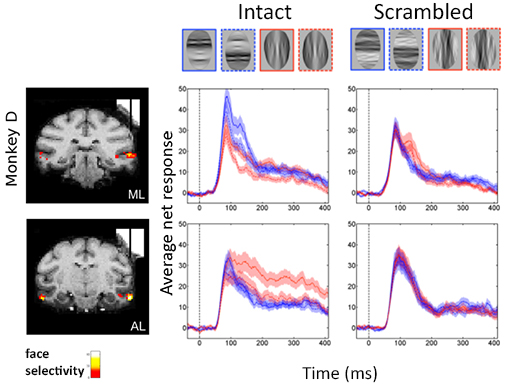
Face-selective neurons in the monkey brain are tuned to orientation. Neurons in the face-selective middle lateral patch (ML) preferentially respond to horizontal face cues whereas neurons in the more anterior patch (AL) prefer vertical cues. These orientation biases were specific to faces as they did not emerge when oriented face stimuli were scrambled.

